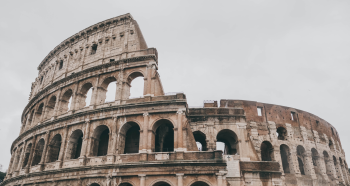William is starting his 21st year of teaching Latin. He has taught for the last 18 years at Tom C. Clark High School in San Antonio, TX and at Barbara Bush Middle School and Ronald Reagan High School the 3 years prior to that. He is very involved in JCL and ACL and has served in various leadership roles in the past. He enjoys reading, watching movies, watching college sports, cooking, and working with kids. William is currently the chair of the American Classical League (ACL) Diversity and Inclusion Task Force.
We spoke to him about his background, the work of the Task Force, and his vision for the next generation of Classics teaching.
1. Tell us about why you became a Latin teacher.
I became a Latin teacher because I fell in love with the language, the culture, and the people in the Junior Classical League (JCL). I met some of the most awesome friends and mentors through JCL and have gained so much from the study of Latin and Classical cultures and I wanted to share that love and knowledge with my students.
2. How and why did you get involved with the ACL Diversity and Inclusion Task Force?
I was asked to chair the Task Force by former ACL President Kathy Elifrits, and populated the committee and came up with the charges and specific action plans under the guidance of current ACL President Mary Pendergraft. I felt that the initiative was extremely important as we continue to grow and change as an organization.
3. What kind of work does the ACL Diversity and Inclusion Task Force do?
The Task Force started with examining materials that were considered problematic (e.g. recruitment materials, newsletter articles, etc.). We then moved on to dealing with various issues that ACL members brought to us. We have also written and edited several statements relating to social justice issued by ACL.
4.What advice would you give Latin teachers wanting to make their Latin classrooms more inclusive, diverse spaces?
Know that every child deserves to be loved and nurtured, regardless of race, gender, background, learning differences, etc. Ultimately, the teacher is there to teach the students, not the curriculum. If students feel like your classroom is a safe space, they will come to you. As a Latin teacher, there will be difficult topics to teach and discuss. Having an open mind and being sensible to everyone’s feelings about these topics will be extremely important in building a diverse and inclusive classroom environment.
5. Are there any resources you would recommend for Latin teachers to develop their understanding of these issues?
The resources provided by Multiculturalism, Race, & Ethnicity in Classics Consortium are very helpful.
6. How would you like to see Classics teaching evolve and become more diverse and inclusive over the next generation?
I want the teaching of Classics to be relevant to the students today. I want them to be able to examine evidence critically and come to their own conclusions. We can’t change the past, but we can learn from it. We can’t sanitize some of the difficult moments in history, but we can teach our students to look at things with an open mind and with a critical lens. By providing students with a comprehensive view of the ancient world, they will be able to see and learn from both the good and the bad and make positive contributions for the next generation of Classicists and humanity.
Connect with the work of ACL at @ACLClassics or visit their website.
Cambridge University Press is not responsible for the content of external sites.

Nota bene! This is part of our Diversity and Inclusion in the Latin Classroom series. To learn more about the series, please visit the home page.





